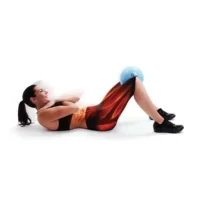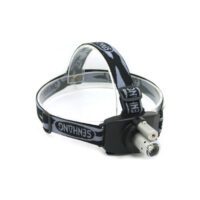Vestibular Physiotherapy
Article by Shane Armfield
Vestibular Physiotherapy
Your Guide for Everyday Wellbeing
What is Vestibular Physiotherapy?
Vestibular Physiotherapy stands out as an effective treatment method aimed at improving the function of your vestibular system. This system, crucial for balance and orientation, can cause symptoms such as vertigo, dizziness, nausea, and impaired balance when it’s not functioning properly. Trained Vestibular Physiotherapists have special training in assessing and treating these symptoms, utilising their knowledge to provide targeted and effective care.

The Vestibular System Explained
Your vestibular system plays a vital role in maintaining balance and spatial orientation. Situated in the inner ear, it includes the semicircular canals and otoliths, which detect rotational movements and linear accelerations. This system sends crucial signals to the brainstem, aiding in controlling eye movements and balance.
Differentiating Vertigo from Dizziness
Although often used interchangeably, vertigo and dizziness are distinct. Vertigo refers to the sensation of spinning or movement, whereas dizziness encompasses a broader range of sensations like lightheadedness. Understanding these differences is key in diagnosing and treating these conditions effectively.
Common Causes of Vertigo and Dizziness
Various conditions can lead to vertigo or dizziness, such as:
- Benign Paroxysmal Positional Vertigo (BPPV)
- Meniere’s Disease
- Cervicogenic Dizziness (Neck-Origin Dizziness)
- Vestibular Migraine
- Inner ear inflammation, vestibular neuritis, and acoustic neuroma
Vestibular Rehabilitation Therapy (VRT)
VRT, a cornerstone of vestibular physiotherapy, focuses on enhancing the brain’s ability to adapt to vestibular issues. This therapy aims to improve balance and reduce symptoms like dizziness and vertigo.
The Role of a Vestibular Physiotherapist
Vestibular physiotherapist’s advocate for a holistic approach to treating vestibular disorders. Our training enables us to conduct comprehensive assessments and tailor rehabilitation plans that address each patient’s unique needs. They use exercises and techniques to retrain the brain and vestibular system, facilitating a return to normal function.
New Research in Vestibular Physiotherapy
Recent research in this field has shown promising results. Studies indicate that tailored vestibular exercises can significantly reduce symptoms and improve the quality of life for those suffering from vestibular disorders. These exercises focus on eye-head coordination, balance training, and habituation exercises to reduce dizziness.
What to Do? Seeking Professional Advice
If you experience symptoms like vertigo or dizziness, consulting a vestibular physiotherapist is crucial. Early assessment and treatment can lead to more effective management of your symptoms. As professionals, we can guide you through a rehabilitation program designed to address your specific needs and help you regain balance and stability in your daily life.
Conclusion
Vestibular Physiotherapy offers a professional approach to managing balance and dizziness issues. By understanding the vestibular system and its impact on our wellbeing, and with the help of trained professionals, individuals can find relief and return to a more balanced life.
For more detailed information and guidance, explore PhysioWorks, a resource offering a wealth of knowledge and professional insights into vestibular physiotherapy and related conditions.
Rochedale - Call 38410277
Book Online: RochedaleSalisbury - Call 32751044
Book Online: SalisburySandgate - Call 32691122
Book Online: SandgateVestibular Physiotherapy FAQs
- What is vestibular physiotherapy?
- Vestibular physiotherapy is a specialised treatment that improves the function of the vestibular system, which is crucial for balance and orientation.
- How does the vestibular system work?
- The vestibular system, located in the inner ear, includes semicircular canals and otoliths that detect rotational movements and linear accelerations, sending crucial signals to the brainstem to help control balance.
- What causes vertigo and dizziness?
- Various conditions, including BPPV, Meniere’s Disease, vestibular migraines, and inner ear inflammation, can cause vertigo and dizziness.
- What is Vestibular Rehabilitation Therapy (VRT)?
- VRT focuses on enhancing the brain’s ability to adapt to vestibular issues, improving balance and reducing symptoms like dizziness and vertigo through tailored exercises.
- Why should I see a vestibular physiotherapist?
- Early assessment and treatment by a vestibular physiotherapist can lead to more effective symptom management, providing tailored rehabilitation plans to address your unique needs.
- Is there new research supporting vestibular physiotherapy?
- Yes, recent studies show that tailored vestibular exercises can significantly reduce symptoms and improve the quality of life for those with vestibular disorders.
Related Articles
- Vestibular Rehabilitation Therapy (VRT): This article discusses the role of VRT in managing vestibular disorders, offering hope and tangible results for those affected.
- Benign Paroxysmal Positional Vertigo (BPPV): An overview of BPPV, its triggers, and impact on daily life, highlighting the significance of understanding this common vestibular disorder.
- Vertigo & Dizziness – Causes & Management: Provides a broad overview of the causes of vertigo and dizziness, emphasising the importance of differentiating between them for effective management.
- Vestibular Migraine: Focuses on the unique challenges in diagnosing and treating vestibular migraines, offering insights into managing this condition.
- Cervicogenic Dizziness & Cervical Vertigo – Tips & Treatment: Details how neck disorders can lead to dizziness and vertigo, underlining the interconnectedness of cervical health and vestibular symptoms.
- Vestibular FAQs: Answers frequently asked questions about vertigo and dizziness, enhancing understanding of these conditions and their management.
- Meniere’s Disease: Discusses the symptoms, diagnosis, and management of Meniere’s Disease, providing valuable information for those seeking to understand this inner ear disorder.
Article by Shane Armfield
Discussing Dizziness & Vertigo Causes
Understanding Vertigo Causes: How to Find Balance Again


Battling Vertigo and Dizziness
Experiencing vertigo or dizziness can make everyday tasks feel overwhelming. These sensations can disrupt your life, making it difficult to walk, drive, or even stand without feeling off-balance. Identifying the causes behind vertigo and dizziness is crucial to regaining stability and returning to your normal routine.
Common Causes of Vertigo and Dizziness
Inner Ear Disorders
Vertigo often originates from problems within the inner ear. Some common conditions include:
- Benign Paroxysmal Positional Vertigo (BPPV): This occurs when tiny crystals in your ear canal become dislodged, leading to sudden and brief episodes of dizziness.
- Meniere’s Disease: Characterised by a fluid imbalance in the inner ear, Meniere’s disease can cause vertigo, tinnitus, and hearing loss.
- Vestibular Neuritis or Labyrinthitis: These conditions result from inner ear infections that cause inflammation and lead to vertigo.
Cervicogenic Dizziness
Another significant cause is cervicogenic dizziness, which stems from neck issues. Problems in the neck can interfere with sensory signals to the brain, resulting in dizziness. This type of dizziness is often overlooked but is crucial to recognise for effective treatment.
Other Causes of Dizziness
Dizziness can also arise from various other sources, including:
- Low Blood Pressure: Sudden drops in blood pressure can cause light-headedness.
- Medications: Some medications list dizziness as a potential side effect.
- Anxiety or Stress: High stress levels can lead to episodes of dizziness.
Diagnosing Vertigo and Dizziness
Understanding the root causes of vertigo and dizziness helps healthcare professionals tailor treatments to reduce or eliminate these symptoms. This process may involve a series of diagnostic tests to pinpoint the exact cause, ensuring a more effective treatment plan.
Treatment Options
Vestibular Physiotherapy
Vestibular physiotherapy can significantly improve symptoms of vertigo and dizziness. This specialised therapy focuses on exercises and techniques that help retrain the brain and improve balance. It's especially beneficial for conditions like BPPV and Meniere’s disease.
Medical Treatments
In some cases, medication may be prescribed to manage symptoms or treat underlying conditions. For instance, medications can reduce inner ear inflammation or manage anxiety-related dizziness.
Lifestyle Changes
Making certain lifestyle adjustments can also help. Reducing salt intake can manage Meniere’s disease, while regular exercise and stress management techniques can alleviate anxiety-induced dizziness.
Conclusion
Determining the causes of vertigo and dizziness can be complex. While many causes are benign and manageable, some may indicate more serious conditions. It's essential to consult a healthcare professional for an accurate diagnosis and appropriate treatment plan. Vestibular specialists, including ENT doctors and vestibular physiotherapists, can guide you towards a more stable and balanced life.
What to Do?
If vertigo or dizziness is impacting your life, consider booking an appointment with a physiotherapist. They can assess your symptoms and provide tailored advice. For more information on managing vertigo and dizziness, explore our Vestibular Physiotherapy section and FAQs.
Rochedale - Call 38410277
Book Online: RochedaleSalisbury - Call 32751044
Book Online: SalisburySandgate - Call 32691122
Book Online: SandgateVertigo FAQs
- What is vertigo? Vertigo is a sensation of spinning or dizziness, often caused by inner ear problems.
- What causes vertigo? Common causes include BPPV, Meniere’s disease, vestibular neuritis, vestibular migraine and cervicogenic dizziness.
- How is vertigo diagnosed? Diagnosis involves a physical examination, medical history review, and specific tests like the Dix-Hallpike maneuver. Consult your physiotherapist or doctor.
- Can stress cause vertigo? Yes, high stress and anxiety can lead to dizziness and vertigo episodes.
- What is the treatment for vertigo? Treatments include vestibular physiotherapy, medications, and lifestyle changes such as reducing salt intake.
- When should I see a doctor or physiotherapist for vertigo? If vertigo significantly impacts your daily life or is accompanied by other symptoms like hearing loss or severe headaches, seek medical advice.
Related Articles
- Cervicogenic Dizziness & Cervical Vertigo - Tips & Treatment: Readers will find detailed explanations about how neck disorders can lead to dizziness and vertigo.
- Vertigo & Dizziness: This article offers a broad overview of dizziness and vertigo, providing insights into their differences and potential causes.
- Vestibular Physiotherapy: Balance & Dizziness Solutions: Explore how vestibular physiotherapy can help manage and treat balance issues and dizziness.
- What Are The Four Types Of Dizziness?: Readers will learn about the four distinct types of dizziness and their respective causes and symptoms.
- Meniere's Disease: An in-depth look at Meniere's Disease, offering insights into its symptoms, diagnosis, and management.
- Vestibular Migraine: This page discusses vestibular migraines, highlighting their unique challenges in diagnosis and treatment.
- Neck Pain: Find comprehensive information on the various causes of neck pain and its relationship to dizziness and vertigo.
- What Are The Symptoms Of BPPV?: An article detailing the symptoms of Benign Paroxysmal Positional Vertigo (BPPV), helping readers to better understand this condition.
- Vestibular FAQs: Offers answers to frequently asked questions about vertigo and dizziness, enhancing understanding of these conditions.
- Vertigo Causes & Dizziness Causes - Advice & Managing Tips: Provides information on the various causes of vertigo and dizziness, along with tips for managing these conditions.
Article by John Miller
Balance Exercises
How to Improve Your Balance
Improving your balance is not only possible, but it can also be remarkably straightforward. Recent scientific research underscores the effectiveness of balance retraining. Remarkably, you can see significant improvements in just a few weeks by incorporating progressive balance exercises. These exercises work to normalise your balance and corrective reactions, essential for everyday activities and sports performance.
The Importance of Balance Assessments
A crucial first step in improving balance is undergoing a professional balance assessment. Physiotherapists are skilled in safely evaluating your balance and prescribing tailored exercises and equipment for balance improvement. These assessments form the foundation for a personalised balance enhancement program.
Read more: Where Can You Get Your Balance Assessed?


The Best Exercises for Fall Prevention
One of the primary benefits of improved balance is fall prevention. This is particularly important as we age. Exercises that enhance strength, balance, and righting reactions are central to fall prevention. Safety during these exercises is paramount. A physiotherapist can tailor a safe, effective fall-prevention exercise program to your needs. This personalised approach ensures a steady progression as your balance improves. For professional guidance on starting a fall-prevention exercise routine, consult your physiotherapist.
Utilising Balance Enhancement Products
Over the years, clinicians have developed a range of products that effectively enhance balance. These products have shown success in reducing falls plus also ankle and knee ligament sprains and improving daily and sporting performance. Many of these can be used conveniently at home to boost your balance, reduce injury risk, and alleviate joint pain.
Some recommended balance enhancement products include:
Incorporating these products into your balance training can maximise benefits, leading to improved balance and stability.
For more details: Balance-Related Products
New Research and Developments in Balance Training
Recent studies have brought to light new insights in balance training. These include the importance of multi-directional exercises, the role of core strength in balance, and the benefits of proprioceptive training. Integrating these elements into balance training can lead to more comprehensive improvements.
Conclusion and Next Steps
Improving your balance is an achievable goal with the right approach. Starting with a professional assessment and following through with tailored exercises and the use of enhancement products can lead to significant improvements. The evolving field of balance training continues to offer new strategies and insights.
What to Do Next?
Seek professional advice from your physiotherapist. They can guide you through a safe, effective balance improvement program tailored to your needs. Remember, the journey to better balance starts with a single step – reaching out to a professional!














